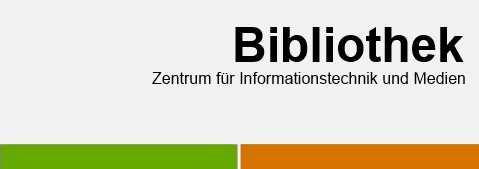Filtern
Erscheinungsjahr
Dokumenttyp
- Wissenschaftlicher Artikel (36)
- Rezension (8)
- Arbeitspapier (6)
- Bachelorarbeit (5)
- Buch (Monographie) (5)
- Bericht (3)
- Teil eines Buches (Kapitel) (2)
Schlagworte
- Geldpolitik (6)
- Smart City (4)
- Digitalisierung (3)
- Wirtschaftspolitik (3)
- Digitale Revolution (2)
- Kapital (2)
- Klimaschutz (2)
- Makroökonomie (2)
- Mikroökonomie (2)
- Piketty, Thomas (2)
Institut
- Wirtschaft Gelsenkirchen (65) (entfernen)
Sowohl im Online-, aber auch im stationären Handel sind schon etliche innovative immersive Anwendungen entstanden, die neue kognitive und affektive Interaktions- und Informationsmöglichkeiten bieten. In den Bereichen Kunst, Immobilien, Architektur, Gaming, Fashion, Stadtplanung und -führungen finden sich ebenfalls mehr und mehr AR/VR Anwendungen. In diesem Beitrag wird nach einer Sichtung ausgewählter immersiver Projekte ein Konzept zur Nutzung von AR bzw. VR für Leerstände in einer ehemals attraktiven Einkaufsmeile in Gelsenkirchen vorgestellt.
Short Selling
(2022)
Die Ukrainekrise und coronabedingte Lieferkettenprobleme treiben derzeitdie Rohstoff-, Material- und Lebensmittelpreise hoch. Auch die Inflationser-wartungen steigen; es drohen Zweitrundeneffekte imGefolge höhererLohnforderungen und Lohnabschlüsse. Langfristig könnten in der Eurozoneweitere Faktoren die Inflation treiben, z.B. angebotsseitig der Fachkräfte-mangel sowie globale Nahrungsmittelknappheiten und politikseitig diegewollten Effekte der Klimapolitik. Der Beitrag diskutiert vor diesemHinter-grund geldpolitische Implikationen.
Planung bzw. Budgetierung bilden ein zentrales Element des Controlling. Aussagekräftige Ergebnisse der Budgetierung sind unverzichtbar für die Steuerung der im Unternehmen verfügbaren Ressourcen. Entsprechend der hohen Bedeutung der Budgetierung ist eine intensive methodische Innovationsbereitschaft bei den Planungsinstrumenten in den letzten Jahren zu beobachten. Zwischenzeitlich werden auch die Einsatzbereiche des Zero-Based-Budgeting wieder intensiver diskutiert (= reloaded), wobei hier die Besonderheit darin besteht, dass dieses Instrument bereits in den 80er Jahren für einige Jahre eine stärkere Beachtung in der betriebswirtschaftlichen Theorie und Praxis gefunden hatte.
Ein größerer Anteil der in den letzten Jahren vorgenommenen Unternehmensakquisitionen wurde maßgeblich mit attraktiven Synergieerwartungen begründet. Bei näherer Betrachtung können diese Synergien oft nur wenig präzise quantifiziert und der Zeitpunkt ihrer Realisierung nur ungenau eingeordnet werden. Der vorliegende Beitrag zeigt die Bedeutung von Synergien in Verbindung mit dem Goodwill, grenzt die Kosten- und Umsatzsynergien inhaltlich ab und befasst sich auf der Basis zahlreicher Studien mit dem aktuellen Erkenntnisstand in Verbindung mit der Vorbereitung und Realisierung von Kosten- und Umsatzsynergien.


